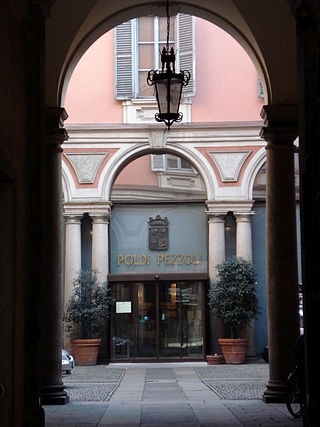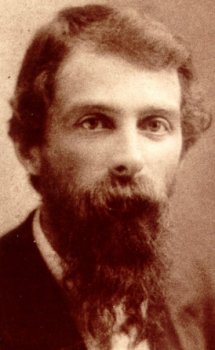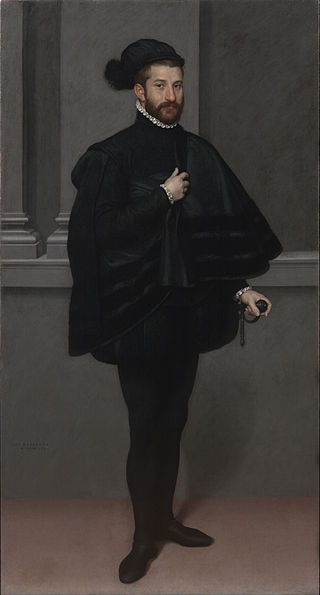
Giovanni Battista Tiepolo, also known as GiambattistaTiepolo, was an Italian painter and printmaker from the Republic of Venice who painted in the Rococo style, considered an important member of the 18th-century Venetian school. He was prolific, and worked not only in Italy, but also in Germany and Spain.

BartolomeoMontagna was an Italian Renaissance painter who mainly worked in Vicenza. He also produced works in Venice, Verona, and Padua. He is most famous for his many Madonnas and his works are known for their soft figures and depiction of eccentric marble architecture. He is considered to be heavily influenced by Giovanni Bellini, in whose workshop he might have worked around 1470. Benedetto Montagna, a productive engraver, was his son and pupil and active until about 1540. He was mentioned in Vasari's Lives as a student of Andrea Mantegna but this is widely contested by art historians.
Andrea Solari (1460–1524) was an Italian Renaissance painter of the Milanese school. He was initially named Andre del Gobbo, but more confusingly as Andrea del Bartolo a name shared with two other Italian painters, the 14th-century Siennese Andrea di Bartolo, and the 15th-century Florentine Andrea di Bartolo.

The Madonna of the Book, or the Madonna del Libro, is a small painting by the Italian Renaissance artist Sandro Botticelli, and is preserved in the Poldi Pezzoli Museum in Milan. The painting is executed in tempera on panel. It dates from between 1480 and 1481.

The Museo Poldi Pezzoli is an art museum in Milan, Italy. It is located near the Teatro alla Scala, on Via Manzoni 12.

Antonio Zanchi was an Italian painter of the Baroque, active mainly in Venice, but his prolific works can also be seen in Padova, Treviso, Rovigo, Verona, Vicenza, Loreto, Brescia, Milano, and Bergamo, as well as Bavaria.

Giuseppe Bertini (1825–1898) was an Italian painter, active in his native Milan.

Giuseppe Pellizza da Volpedo was an Italian divisionist painter. He was born and died in Volpedo, in the Piedmont region of northern Italy.

Cristoforo Moretti was a Lombard painter of the quattrocento who worked in a late International Gothic style very similar to that of Michelino da Besozzo’s last period. Few of the unsigned works later attributed to him are attributed with perfect certainty.

Via Manzoni, is a busy and fashionable street in the Italian city of Milan which leads from the Piazza della Scala north-west towards Piazza Cavour. Notable buildings include the Museo Poldi Pezzoli, the elegant Grand Hotel et de Milan, which was the place of Giuseppe Verdi’s death in 1901, and several fine palaces. Via Manzoni was originally called Corsia del Giardino before the crossroad with Via Monte Napoleone and Corso di Porta Nuova up until Piazza Cavour.

Daniele Ranzoni was an Italian painter of second half of the 19th century.

Profile Portrait of a Young Lady is a 1465 half-length portrait, made with oil-based paint and tempera on a poplar panel, usually attributed to Antonio del Pollaiuolo. It is held by the Gemäldegalerie in Berlin, which describes this work as one of its most famous paintings, and as one of the most famous portraits of women from the early Italian Renaissance.

Gian Giacomo Poldi Pezzoli was an Italian count who gathered art from Italian Renaissance. Italys' first private museum which bears his name, the Museo Poldi Pezzoli.

The Poldi Pezzoli Madonna or Madonna with the Sleeping Christ Child is a tempera on canvas painting by Andrea Mantegna, dating to around 1490-1500, after the painter's trip to Rome. It was bought from Giovanni Morelli's collection by Gian Giacomo Poldi Pezzoli shortly after the 1850s and is now in the Museo Poldi Pezzoli in Milan. It was restored in 1863 by Giuseppe Molteni, who added the varnish which has now yellowed.

Portrait of a Young Woman is a mixed-technique painting on panel of c. 1470–1472, variously attributed to Piero del Pollaiuolo or his brother Antonio. It is now in Milan in the Museo Poldi Pezzoli, which uses the painting as its symbol.

Portrait of a Woman is a c.1475 tempera and oil on panel painting by Antonio or Piero del Pollaiuolo. It has been in the Uffizi in Florence since 1861. Since 1861 it has been misattributed to Piero della Francesca, a young Leonardo da Vinci and Cosimo Rosselli.

The Knight in Black is a c.1567 oil on canvas portrait painting of an unknown male subject by Giovanni Battista Moroni, now in the Museo Poldi Pezzoli in Milan.

Theseus Killing the Minotaur is an oil-on-panel painting by Cima da Conegliano, created c. 1505, now in the Museo Poldi Pezzoli in Milan. It depicts a scene of Greek mythology, when Theseus killed the Minotaur in Crete's labyrinth.

The Chess Game is a painting of c. 1530 by Giulio Campi, a Renaissance painter from Cremona. Since 1970, it has been in the Museo Civico d'Arte Antica in Turin.

Self-Portrait Aged 71 is an 1862 oil-on-canvas painting by the Italian artist Francesco Hayez. The Uffizi had been requesting a self-portrait from him since 1858 via Andrea Appiani's daughter-in-law Giuseppina Appiani Strigelli and it finally arrived in 1863. It is still in the Uffizi's Vasari Corridor.



















